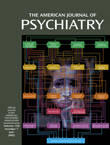Essential Components of Cognitive-Behavior Therapy for Depression
The Accreditation Council for Graduate Medical Education has mandated cognitive behavior therapy as one of five areas of psychotherapy in which residents must develop “competency” (surely the wrong term). This decision should increase cognitive behavior therapy teaching in residency programs and the need for instructional texts. Persons and colleagues have written a basic, highly structured, consciously repetitive text that mirrors their vision of cognitive behavior therapy. Seemingly intended for novices, it is clearly written, focused, and useful so far as it goes. Videotapes (not reviewed) and worksheets accompany it. This is a very basic book, with highly circumscribed content.
From the opening chapter, the authors stress an evidence-based approach to psychotherapy and cite some of the abundant evidence supporting cognitive behavior therapy. A primer-like tone, oversimplified and self-congratulatory, sometimes undercuts the authors’ reading of the literature, however. In successive chapters, the text then describes five basic skills to be practiced with forms, videotapes, and exercises: individualized (“idiographic”) case formulation and treatment planning, structured therapy sessions, behavioral activity scheduling, using a dysfunctional thought record, and schema change methods. These skills are valuable, particularly case formulation, which is crucial to understanding and organizing psychotherapy, and a struggle for many beginning therapists.
The book can be criticized for focusing simply on these basics, slighting psychotherapeutic “common factors” (1) and assuming that all will go right. The authors abjure addressing the therapeutic alliance, problematic patients, and nonadherence (p. 4). They speak offhandedly of how “a bit of chit chat and the opportunity for the therapist to express warmth and concern for the patient helps to build [essential] rapport” (p. 60) and that patients “often need time to ‘vent’ and receive some empathic support” (p. 65). This is short shrift for beginning therapists.
Cognitive behavior therapy has been criticized for seeming to focus on technique at the expense to the therapeutic relationship, which may yield a mechanical, affectless treatment. The book’s focus on concrete agendas and homework may further this risk for novices. Moreover, one probable benefit of treatment manuals is to provide the clinician with maneuvers for when things go wrong. These keep the therapist hopeful and active and patients, in turn, interested and engaged. Manuals with fallback options may thus prevent demoralization in the therapeutic dyad. Although this book discusses noncompliance at points, it generally lacks that important quality.
This volume thus has the virtues and liabilities of a primer. It offers simple practice exercises, hammers them home with repetition, and summarizes each step at the chapter’s end. It also seems oversimplified in places. Having endorsed “idiographic” over generic, “nomothetic” case formulations, the authors give examples tending to the latter. There is a sameness, not remarked upon, to all of the depressed patients they describe. The book benefits from an extended case presentation by an experienced cognitive behavior therapist, but because she treats a good-prognosis, high-functioning, generally compliant patient who is likely much healthier than patients most residents see, this example has limited utility. Other case vignettes are sketchy, often simplistic, and, in one country western example, hokey. The reader might expect greater depth and clinical complexity from authors in clinical practice. Perhaps the videotapes provide these.
Residents may be dismayed by the authors’ nonmedical model—DSM-IV receives passing mention—and etiologic edge. The authors seem more directive of and less collaborative with patients than other Beckian cognitive behavior therapy proponents. They also might have distinguished cognitive behavior therapy from other psychotherapies, with which their examples sometimes overlap. Therapists who want more than just these “essential components” might prefer Judith Beck’s Cognitive Therapy: Basics and Beyond(2).
1. Frank J: Therapeutic factors in psychotherapy. Am J Psychother 1971; 25:350-361Link, Google Scholar
2. Beck JS: Cognitive Therapy: Basics and Beyond. New York, Guilford, 1995Google Scholar



